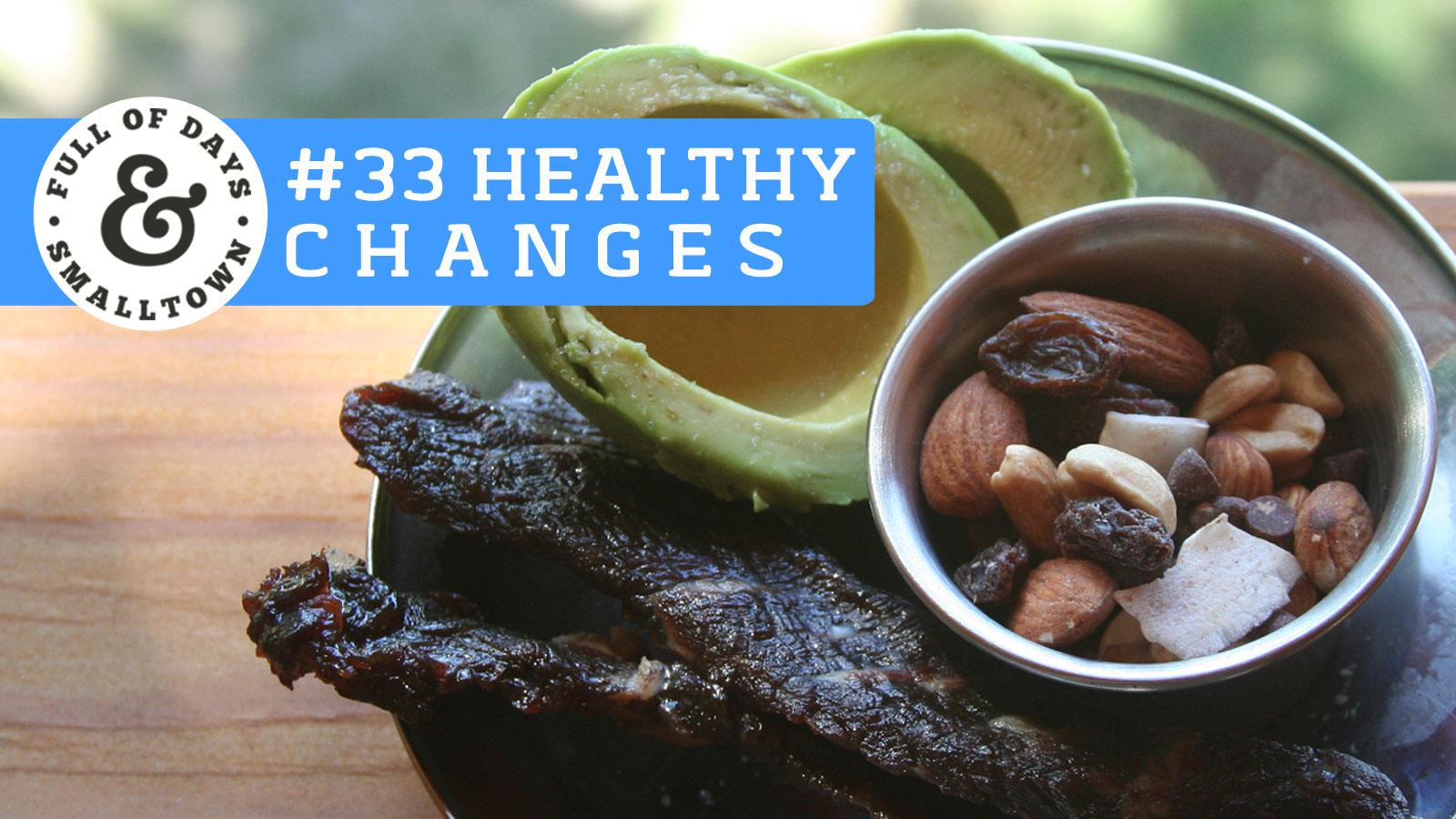
at real food…sounds like a no-brainer, right? For a long time I was confused what equated to “real food” until I came across the findings of Weston A. Price. In this post, I outlined the guidelines for a Traditional Diet as per his findings (and included links up the wazoo for DIYs). I quickly realized that this list can be somewhat daunting to many, especially those new to this way of eating, cooking and feeding your family. Transitioning from one way of eating, to a new way of eating can make my brain hurt. And sometimes simply having a list of what I can eat, smack-dab in front of my face, can help tremendously.
From the aforementioned guidelines, I broke down this traditional diet into a list of eight simple categories. On this list are the “OK to Eat” foods. Stick to these foods and you’ll be good as gold and well within the traditional diet parameters. If you’re looking for a more extensive list with a fresh perspective (and a good chuckle) check out Michael Pollan’s book, “Food Rules: An Eater’s Manifesto”. (Seriously, buy it…you’ll be so glad you did!) Onto the list!
Traditional Diet – OK to Eat
- Fruits & Vegetables
- Pasture-raised Meat & Eggs
- Raw Milk & Cultured Dairy
- Healthy Fats
- Bone Broth
- Fermented Foods
- Sourdough Bread
- Soaked Grains, Nuts, & Legumes
And there you have it! Not too intimidating, right? The best part is, you don’t have to eat from each category if you’re not ready to! But by making sure the food you’re consuming is from this list, you’ll be eating real food! So, next time you pick up a “food item”, check it with the list. Does it fit a category? Yes? Perfect! Jot this list down on a chalkboard or white board and keep it where it’s handy. Better yet, print this list out and keep it on your fridge! It will come in handy with Healthy Change #34!
Fruits & Vegetables: We talked about the importance of veggies in this post. They should make up the bulk of your meals. If you think of a dinner plate salad plate, your veggies should cover half the plate, your meat 1/4 and your starch the other 1/4. This will be a good rule of thumb to help bulk up your veggie intake, but fruit has its place in our diets too. We like to think of fruit as dessert. Something to curb our sweet tooth, sweeten up a smoothie, part of a healthy snack or to finish off a meal. Eat fruit in its whole form, not juiced. This way you’re eating the fiber along with the sugar, and you’ll avoid blood sugar spikes.
Pasture Raised Meat & Eggs: You are what you eat, right? Well, you are what you eat, eats, too! Sobering thought, right? The truth is, eggs that come from hens who spend the majority of their day free-ranging in the sun and pecking at insects and bugs, have a much higher vitamin and mineral content in their yolks. The same goes for grass-fed and grass-finished beef vs. their grain-fed counterparts. For more information on the difference between grass-fed and grain-fed beef, read this post. Also included in this category are game meats, offal, and organ meats.
Raw Milk and Cultured Dairy: In short, raw milk kicks pasteurized milk’s butt. For more on that, read this post on the health benefits of raw milk. Cultured dairy includes foods such as yogurt, raw cheeses, milk kefir and cream cheese or sour cream (if you don’t want to make your own, look for an organic brand such as Nancy’s or Organic Valley at the grocery store). Adding these into your diet introduces probiotics that will make your tummy say, “thank you!”
Healthy Fats: Forget what you’ve heard all these years about fat being bad. Fat does not make you fat. Highly processed, refined, low-fat and sugar-laden foods make you fat! Stick with pasture butter (like Kerrygold), coconut oil and cold pressed avocado or flax seed oils. Read this post for healthy cooking oils, and this post for more information on the benefits of coconut oil.
Bone Broth: Traditionally prepared bone broth is full of healing properties, vitamins and minerals. Making your own broth at home is as easy as boiling water. Read up on all the health benefits of bone broth here. And for a step by step photo tutorial on making your own bone broth, click here. An easy way to get broth into your diet is to use it instead of water for cooking rice. We usually eat rice once or twice a week so this is a good start.
Fermented Foods: If you’re new to the traditional world, this one may take some warming up. Get brave and try out one new fermented food this week. Who knows, you may just love it! If you’re not up for making your own, some of our favorite store bought brands are Oregon Brineworks and Bubbies. Read this post to see how fermented foods help our gut stay healthy, and read this post for a list of fermented foods with DIY recipes.
Sourdough Bread: Making your own sourdough bread can save you thousands of dollars each year, especially if you have a large family like ours. Making sandwiches on sourdough bread, or having a slice of sourdough toast with breakfast is a delicious and frugal way to stretch a meal, but also keep your tummy happy. Click here for our sourdough bread recipe. (Don’t be fooled by store bought sourdough bread…check the ingredients label, traditionally prepares sourdough should never have more than three ingredients: flour, water and salt.)
Soaked Grains, Nuts & Legumes: It’s amazing how many people I know suffer from food sensitivities. After one of our own kiddos started showing signs of food allergies, we sought the help of a naturopath doctor who taught us about Leaky Gut Syndrome. Eating grains, nuts and legumes that haven’t been properly soaked and prepared can wreak havoc on the lining of our intestines, oftentimes resulting in Leaky Gut Syndrome, or what many assume to be food allergies. For more on properly preparing your grains read this post.


